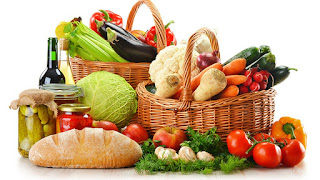Plants rich in anthocyanins
are Vaccinium species, such as blueberry, cranberry, and bilberry; Rubus
berries, including black raspberry, red raspberry, and blackberry; blackcurrant,
cherry, eggplant (aubergine) peel, black rice, Concord grape, muscadine grape,
red cabbage, and violet petals. Red-fleshed peaches and apples contain anthocyanins.
Anthocyanins are less abundant in banana, asparagus, pea, fennel, pear, and potato,
and may be totally absent in certain cultivars of green gooseberries.
The highest recorded amount
appears to be specifically in the seed coat of black soybean (Glycine max L.
Merr.) containing around 2 g per 100 g,in purple corn kernels and husks, and in
skins and pulp of black chokeberry (Aronia melanocarpa L.).Due to critical
differences in sample origin, preparation and extraction methods determining
anthocyanin content,the values presented in the adjoining table are not
directly comparable.
Nature, traditional
agriculture, and plant breeding have produced various uncommon crops containing
anthocyanins, including blue- or red-flesh potatoes and purple or red broccoli,
cabbage, cauliflower, carrots, and corn. Garden tomatoes have been subjected to
a breeding program using introgression lines of genetically modified organisms
(but not incorporating them in the final purple tomato) to define the genetic
basis of purple coloration in wild species originally from Chile and the
Galapagos Islands.The variety
known as "Indigo
Rose" became commercially available to the agricultural industry and home
gardeners in 2012.Investing tomatoes with high anthocyanin content doubles
their shelf-life and inhibits growth of a post-harvest mold pathogen, Botrytis
cinerea.
Tomatoes have also been
genetically modified with transcription factors from snapdragons to produce
high levels of anthocyanins in the fruits.Anthocyanins can also be found in naturally
ripened olives,and are partly responsible for the red and purple colors of some
olives.
http://www.bestbilberry.com
http://www.bestbilberry.com





Comments
Post a Comment